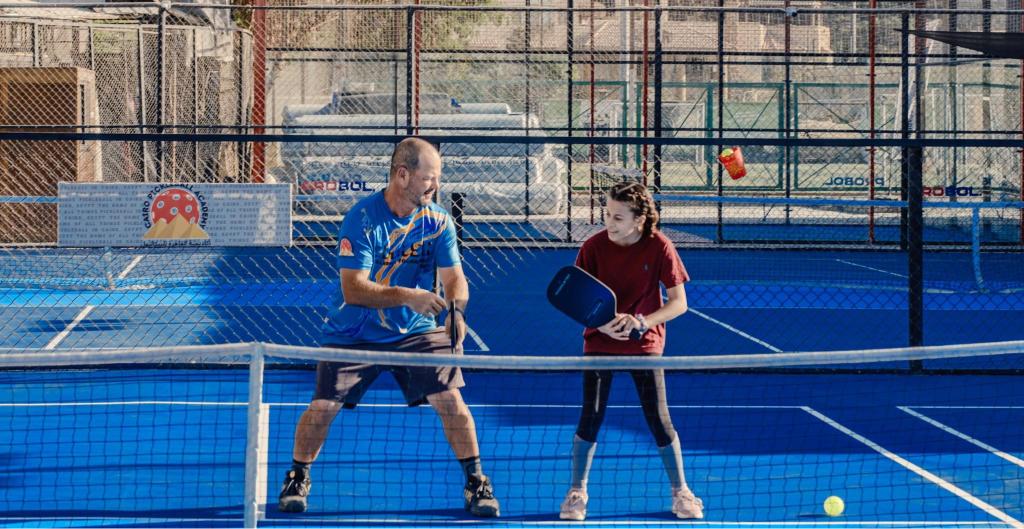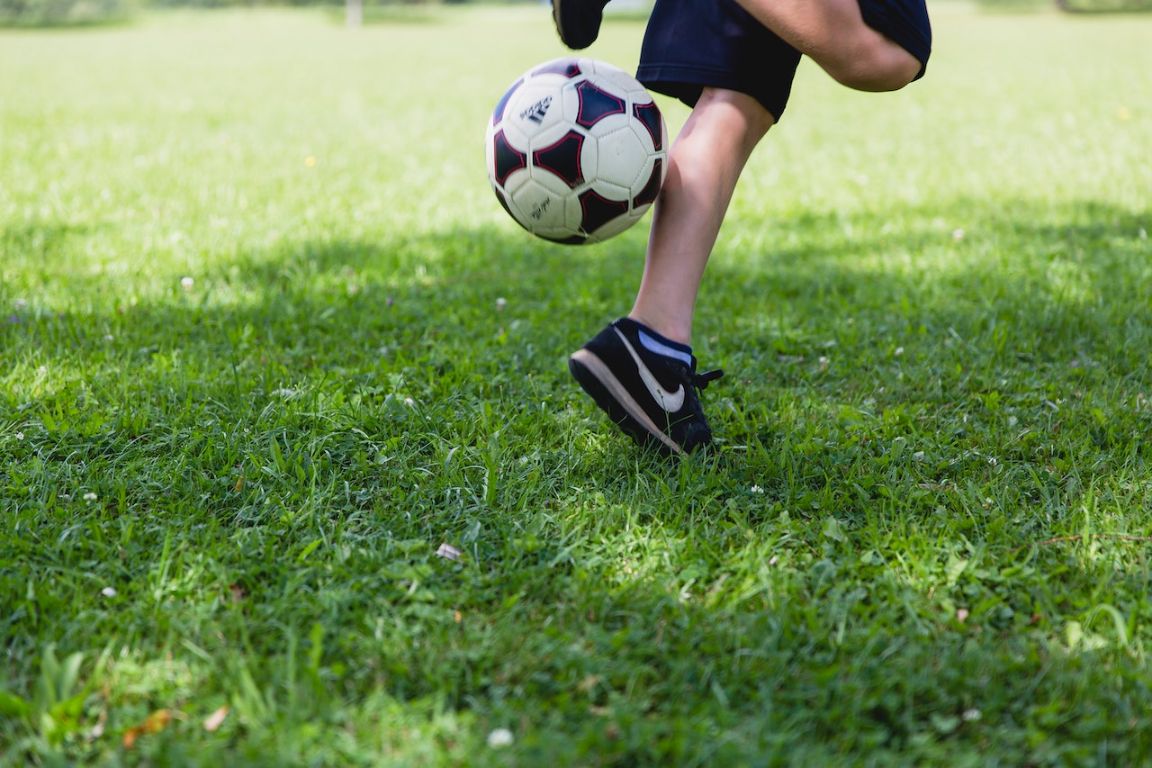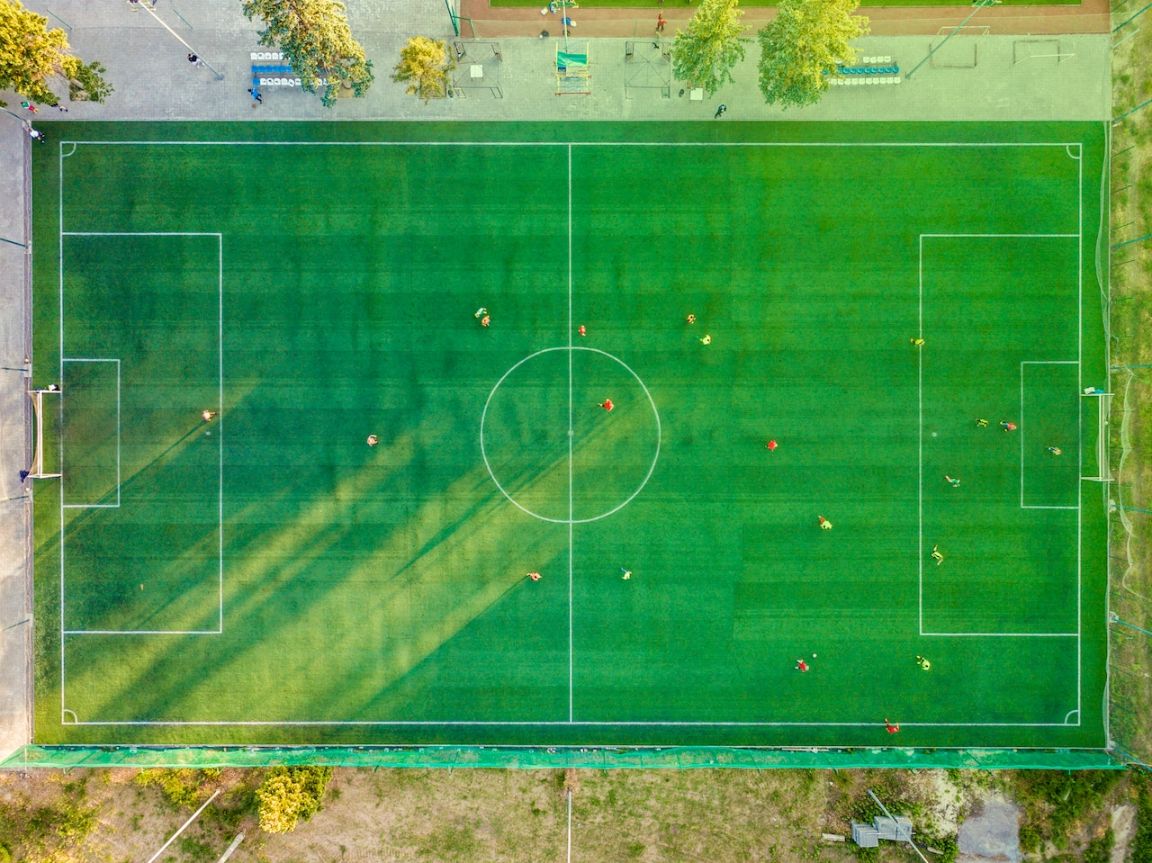Many people search for fun ways to stay healthy and fit. Pickleball, an activity blending tennis and ping-pong, is enjoyed by over 50 million in the U.S. each year. Our blog offers insights into this sport’s surprising health perks, from boosting heart health to enhancing mental sharpness.
Get ready to discover why pickleball might be your new favorite workout!
Understanding Pickleball
Pickleball combines elements from tennis, badminton, and ping-pong, creating a unique and dynamic game that’s easy to learn but challenging to master. Players use paddles made of wood or composite materials to hit a perforated plastic ball over a net.
The rules are straightforward: serve underhand, keep the ball within the court boundaries, and score points by outplaying your opponents.
The sport is played on a court similar in size to a badminton court with a slightly modified tennis net. Doubles or singles can enjoy this fast-paced activity, which caters to all age groups and skill levels.
Pickleball places an emphasis on strategic play rather than brute strength or speed—making it accessible for older adults as well as younger players—and offers an excellent cardiovascular workout without the high impact of more strenuous sports.
Key Health Benefits of Playing Pickleball
Playing pickleball offers a range of health benefits, including reduced joint and muscle strain, enhanced cardiovascular health, improved cholesterol and blood pressure, social inclusion for mental health, enhanced cognitive skills, and the ability to burn calories and maintain shape.
These benefits make pickleball an ideal activity for promoting physical and mental well-being.
1. Reduced Joint and Muscle Strain
Pickleball’s low-impact nature makes it a standout choice for maintaining physical activity without putting undue stress on the body. It offers a safer alternative to high-impact sports, allowing players to enjoy the game with less worry about joint pain or injury.
This sport spares your knees, hips, and back from harsh impacts that come with activities like running or traditional tennis, making it particularly appealing for older adults or those recovering from injuries.
Regularly hitting the pickleball court can lead to stronger muscles and healthier joints over time. The gentle movements involved in playing help increase flexibility and range of motion while also reinforcing muscle strength in a manner that protects rather than punishes your body.
As one transitions from this health benefit, enhanced cardiovascular health is another significant perk worth exploring as part of an active lifestyle through pickleball.
2. Enhanced Cardiovascular Health
Moving beyond the gentle impact on joints and muscles, playing pickleball steps up to significantly boost heart health. Engaging in this fast-paced activity gets the blood pumping, increasing heart rate safely while improving circulation.
This form of cardiovascular exercise is essential for a strong heart and can help prevent heart disease by keeping arteries clear.
Regularly hitting the court can lead to lower blood pressure and better cholesterol management. Participants often notice an enhancement in their overall physical fitness as they bring energy to every game.
Moreover, those who play pickleball may cut down their risk of having a heart attack – making each serve not just a point scored but also a step toward a healthier lifestyle.
3. Improved Cholesterol and Blood Pressure
Pickleball players often notice a positive shift in their health markers, particularly cholesterol and blood pressure levels. Engaging in this aerobic exercise elevates the heart rate, which pumps up circulation and improves the balance between high-density lipoprotein (HDL), often called “good” cholesterol, and low-density lipoprotein (LDL) or “bad” cholesterol.
Regular matches can help manage hypertension, reducing the strain on arteries and decreasing the risk of cardiovascular disease.
Doctors encourage incorporating activities like pickleball into weekly routines to keep the heart strong and blood flowing smoothly. Hitting the court for an hour thrice a week has proven to be effective in keeping cholesterol under control while also maintaining optimal blood pressure.
This sport provides a fun cardio workout that surpasses jogging or cycling by adding excitement without excess stress on joints. Pickleball serves as an underhand solution to strengthening your heart’s condition while you enjoy spirited volleys with friends.
4. Social Inclusion for Mental Health
Pickleball offers a unique opportunity for social inclusion, addressing the mental health implications of loneliness and isolation. Playing pickleball with others can lead to positive interactions that contribute to improved mood, reduced stress, and increased feelings of happiness.
This social sport provides an environment for individuals to meet new people, make friends, and offset feelings of depression through shared physical activity and camaraderie.
Additionally, engaging in pickleball allows individuals to become part of a community built around the sport. This sense of belonging has been associated with improvements in self-esteem and overall well-being.
5. Enhanced Cognitive Skills
Playing pickleball can enhance cognitive skills such as memory recall, hand-eye coordination, and strategic thinking. The game involves quick decision-making and requires players to anticipate their opponents’ moves, stimulating cognitive function.
These mental exercises not only contribute to improved cognitive abilities but also benefit overall mental health and well-being.
Pickleball’s combination of physical activity and strategic thinking can lead to improvement in cognitive skills that are essential for everyday activities. By engaging in this sport, individuals have the opportunity to improve their mental agility while enjoying a fun and social activity. Pickleball has also been known to help you sleep!
6. Burn Calories and Maintain Shape
Enhanced cognitive skills are just one benefit of playing pickleball. Pickleball can also help you burn calories and maintain your shape. This sport is a full-body workout, engaging muscles in the core, upper body, and lower body simultaneously.
It’s a low-impact exercise that’s gentle on your joints while offering cardiovascular benefits and potential weight loss. In fact, playing pickleball for an hour can burn up to 600 calories, making it an effective way to stay active and manage your weight.
Pickleball positively impacts not only the physical aspect but also helps in maintaining overall health by managing cholesterol levels and blood pressure which consequentially lowers the risk of heart disease.
Playing Pickleball as a Low Impact Workout
Pickleball is a low-impact sport that caters to individuals of all ages and fitness levels. With its smaller court size and slower game pace, it reduces the risk of joint and muscle strain compared to high-intensity activities.
This makes pickleball an ideal choice for those looking to engage in physical activity without putting excessive stress on their bodies. Additionally, due to the full-body nature of the game, incorporating movements such as reaching, bending, and stretching, it provides a comprehensive workout that engages core, upper body, and lower body muscles.
Furthermore, playing pickleball presents an opportunity to burn around 600 calories per hour. This calorie-burning potential not only contributes to weight management but also serves as an effective means for weight loss when combined with a well-balanced diet.
Beyond physical benefits, engaging in pickleball releases endorphins – natural pain relievers – promoting stress reduction and contributing to an overall healthier lifestyle.
Pickleball as a Means for Socialization
Pickleball creates opportunities for social interaction, helping players form connections and combat loneliness. The sport brings individuals together, fostering a sense of community and support system.
Engaging with others through pickleball not only enhances self-esteem but also contributes to overall mental well-being.
The social nature of pickleball serves as an avenue for communication and companionship, aiding in the prevention of social isolation and its detrimental effects on mental health. Playing pickleball opens doors for friendships and provides a platform for individuals to engage in regular social activities, contributing positively to their psychological markers while promoting a more holistic approach to health.
The Role of Pickleball in Boosting Mental Health
Transitioning from the social aspect of pickleball, it’s important to understand its role in boosting mental health. Engaging in pickleball can relieve stress, promote social interaction with other players, and result in a sense of accomplishment and pride.
Furthermore, the physical activity involved in playing pickleball triggers the release of endorphins, which help alleviate stress and anxiety.
The sport provides an opportunity for individuals to meet new people and cultivate friendships, serving as a preventive measure against feelings of loneliness and depression. By fostering self-confidence and encouraging interaction, pickleball contributes positively to psychological markers, ultimately improving overall mental well-being.
The combination of physical exercise and social engagement makes pickleball an effective tool for enhancing mental health.
How Playing Pickleball Affects Balance, Hand-Eye Coordination, and Physical Fitness
After discussing the mental health benefits of pickleball, it’s important to understand how this sport impacts physical fitness. Playing pickleball involves constant movement and engagement of multiple muscle groups, leading to improved balance and coordination.
The fast-paced nature of the game requires players to react quickly, enhancing hand-eye coordination and reflexes. This dynamic activity not only keeps the body physically fit but also sharpens cognitive abilities due to its strategic nature.
Pickleball is a low-impact yet effective way to improve overall physical fitness. It offers an enjoyable means of staying active while reaping numerous health benefits such as enhanced balance, refined hand-eye coordination, and an overall boost in physical well-being.
Pickleball and Its Impact on Stress Reduction
Playing pickleball can contribute to stress reduction by promoting the release of endorphins, which help alleviate feelings of anxiety and stress. The social aspect of the game also allows players to connect with others, make new friends, and combat feelings of loneliness and depression.
These combined factors work together to positively impact mental well-being and reduce overall stress levels.
Pickleball’s combination of physical activity and social interaction provides a holistic approach to managing stress and improving mental health. With the opportunity for exercise and connection in one activity, it serves as an effective means for individuals to reduce their daily stresses while enjoying a fun pastime.
Understanding the Equipment You Need for Pickleball
Pickleball requires specific equipment such as paddles, a court, suitable footwear, and balls. Each of these components plays a crucial role in the game and contributes to the overall experience of playing pickleball.
1. Pickleball Paddles
Pickleball paddles are available in various materials, each offering unique benefits. Fiberglass paddles provide power, graphite improves handling, and carbon fiber offers a lightweight option.
When choosing a paddle, it is crucial to consider whether you will be playing indoors or outdoors as this can impact your selection of both paddle and ball.
The choice of material for pickleball paddles has a significant impact on the overall gameplay experience. Players should carefully assess their preferences and playing conditions to select the most suitable paddle for their needs.
2. Pickleball Court
The pickleball court resembles a badminton court, divided into specific zones such as the non-volley zone and service court. For doubles play, the dimensions are 20 feet wide by 44 feet long, while for singles play it is 20 feet wide by 22 feet long.
The net height in the center of the court is 36 inches for both singles and doubles play, with the surface typically made of asphalt, concrete, or wood to ensure good traction to prevent slipping.
Proper markings like baselines and sidelines are crucial for a fair and accurate game.
3. Suitable Footwear
Tennis shoes provide the optimal support and freedom of movement needed for playing pickleball. Non-skid shoes with a flat sole are also recommended to ensure stability on the court.
The right footwear can help prevent sprained ankles, tendonitis, and other foot or ankle injuries that may occur during play.
Moving on to “Pickleball Balls”..
4. Pickleball Balls
Pickleball balls serve as essential equipment for the game, specially designed with a unique hole pattern and material specific to the sport. The right pickleball ball choice directly impacts game speed and performance, emphasizing the need to select high-quality ones.
Visibility on the court is enhanced by offering options in various colors. It’s crucial to consider durability and material when choosing pickleball balls, as these factors significantly affect longevity and overall playing experience.
Different from other sports balls, pickleball balls are designed with specific characteristics that cater to the demands of the game. These features play a vital role in ensuring optimal gameplay quality, making it imperative to carefully select suitable pickleball balls for an enjoyable sporting experience.
Also read: Trending Card Games You Can Learn & Play Now
Conclusion
In conclusion, playing pickleball offers a surprising range of health benefits for people of all ages. It provides an enjoyable way to burn calories, improve cardiovascular health, and enhance overall physical fitness.
The sport’s low-impact nature reduces strain on joints and muscles while offering opportunities for social inclusion and mental well-being. Moreover, the fast-paced nature of the game can positively impact cognitive skills and hand-eye coordination.
Feature Image Credit: https://pickleballadvisor.org/pickleball-images/






